
The Presidential Aircraft VC-25 Sam 28000 (Also know as "Air Force One" when the
President of the United States is onboard).
I photographed President Reagan and Nancy once before on the 4th of July 1982 after the Shuttle landing STS-4.
Here's are some of the photos I took that day.
All photos William G. Hartenstein ©2004
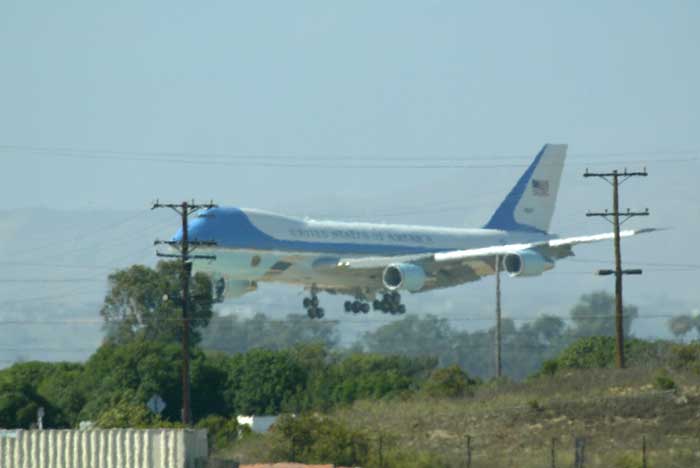
SAM 28000 arrives at Pt. Mugu at about 4:30pm on runway 21.
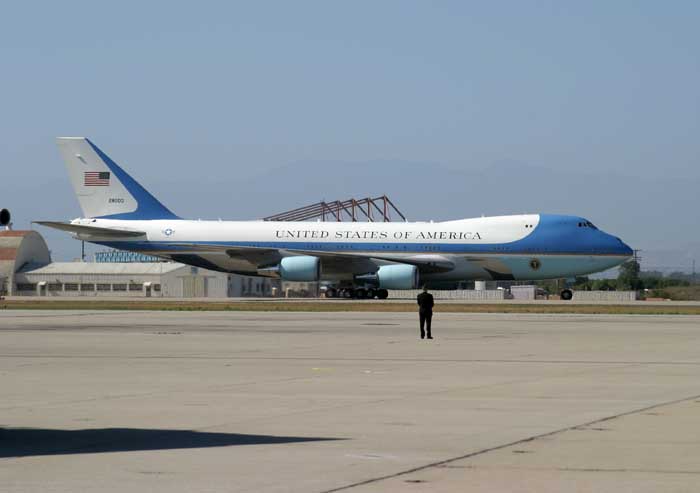
SAM 28000 taxi's down runway 9.
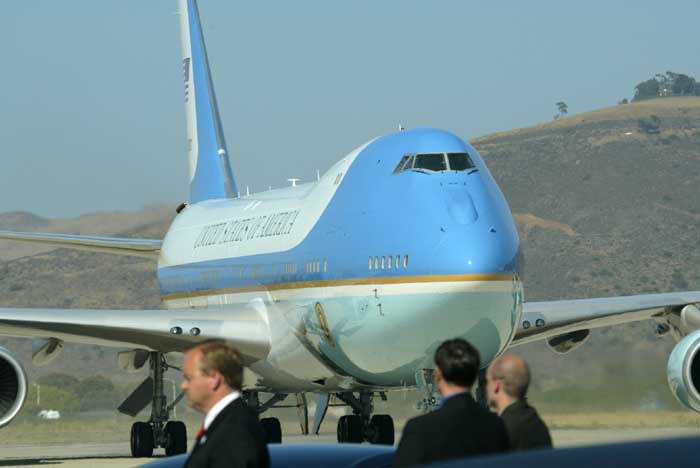
Secret Service stands by Motorcade as the Presidential Aircraft pulls up.
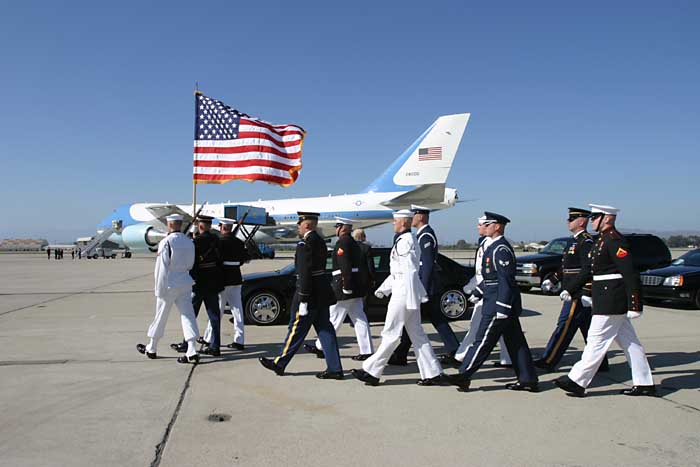
The Joint Color Team and the Joint Body Bearers walk out to retrieve the 40th President of the United States.
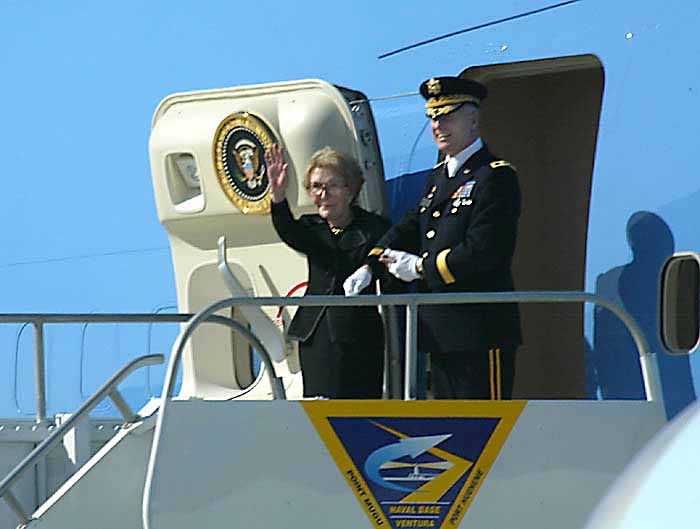
Nancy Reagan waves to cheering supporters as she steps off the Presidential Aircraft.
She is escorted by Maj. Gen. Galen B. Jackman.
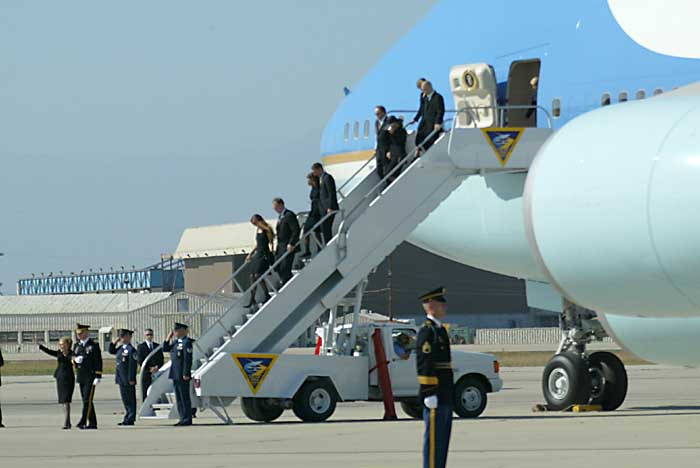
Patti, Ron and Michael follow Mrs. Reagan off the Presidential Aircraft.
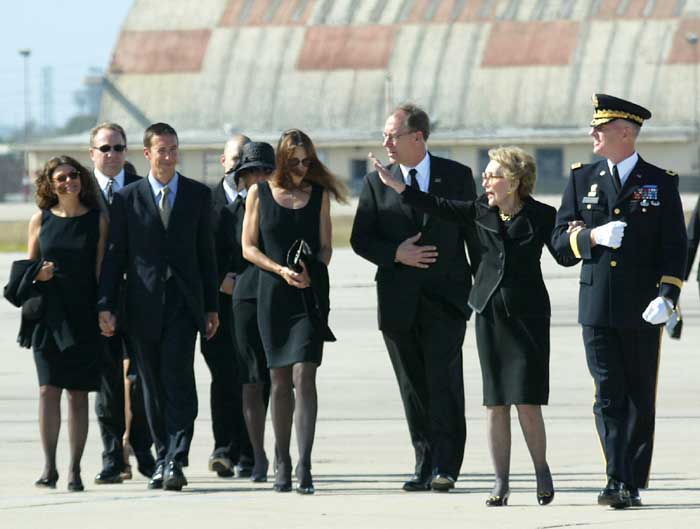
Mrs. Reagan waves to a large crowd that gathered to greet her and President Reagan.
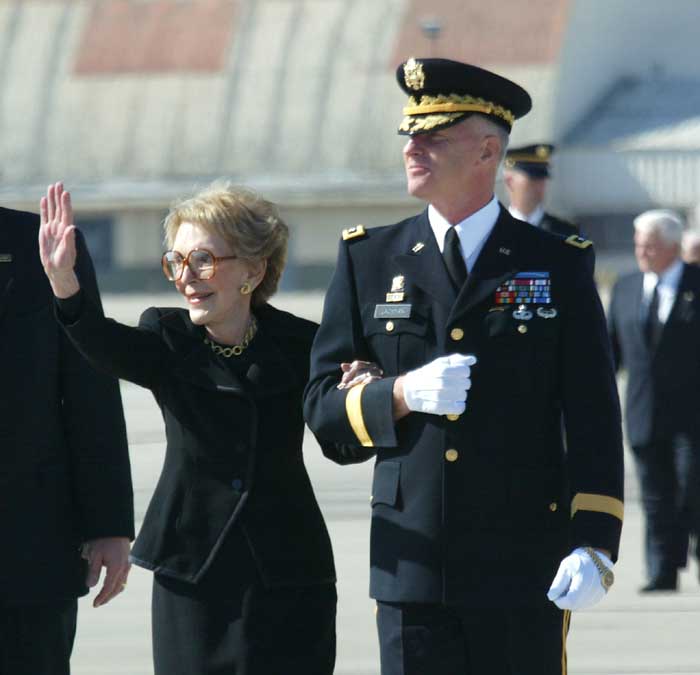
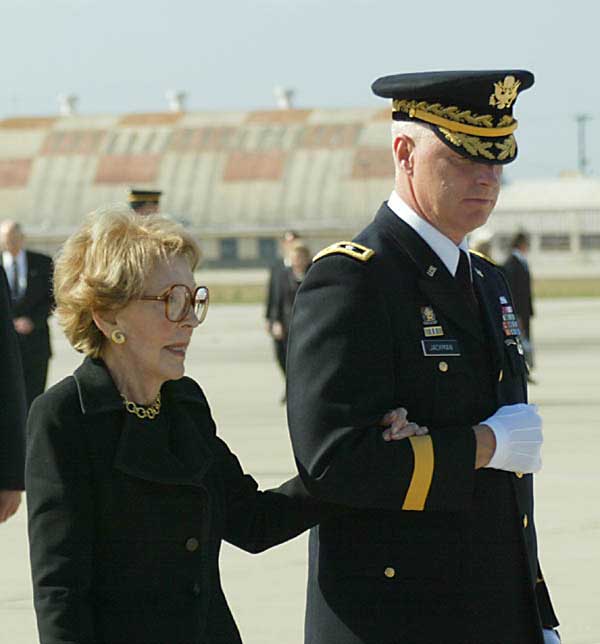
The Commanding general for the U.S. Army Military District of Washington serves as the military escort
for the family from the time of official announcement of the death until burial.
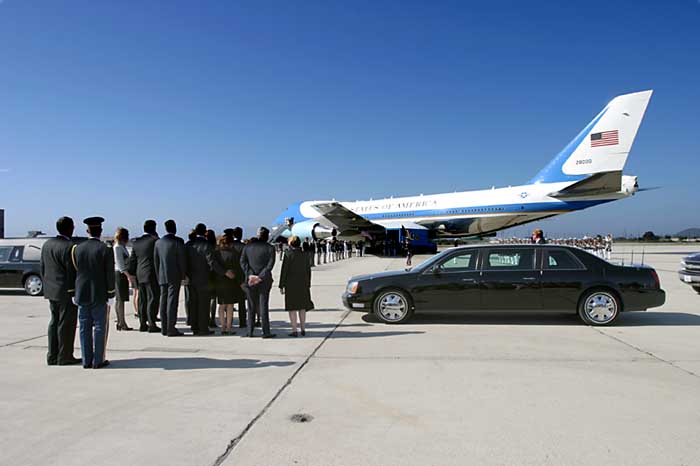
The Reagan family with close friends watch while President Reagan is removed from the aircraft.
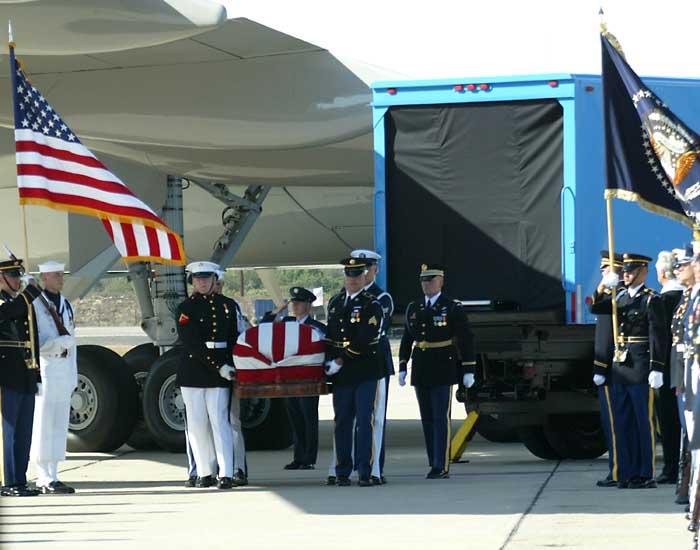
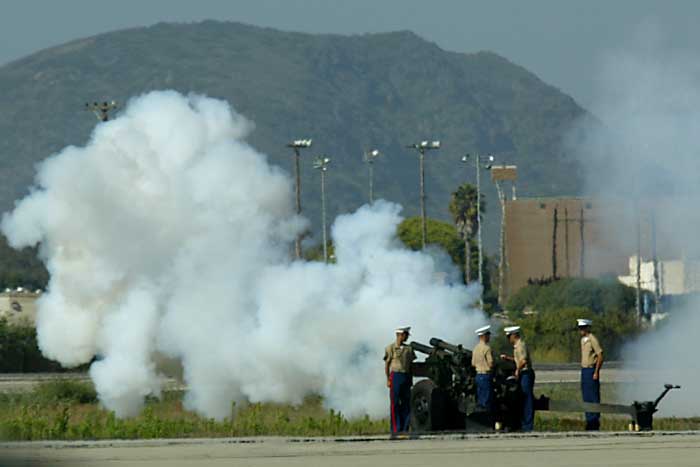
President Reagan receives a 21 cannon salute.
Read more about origins of the 21 gun salute at the bottom of this page.
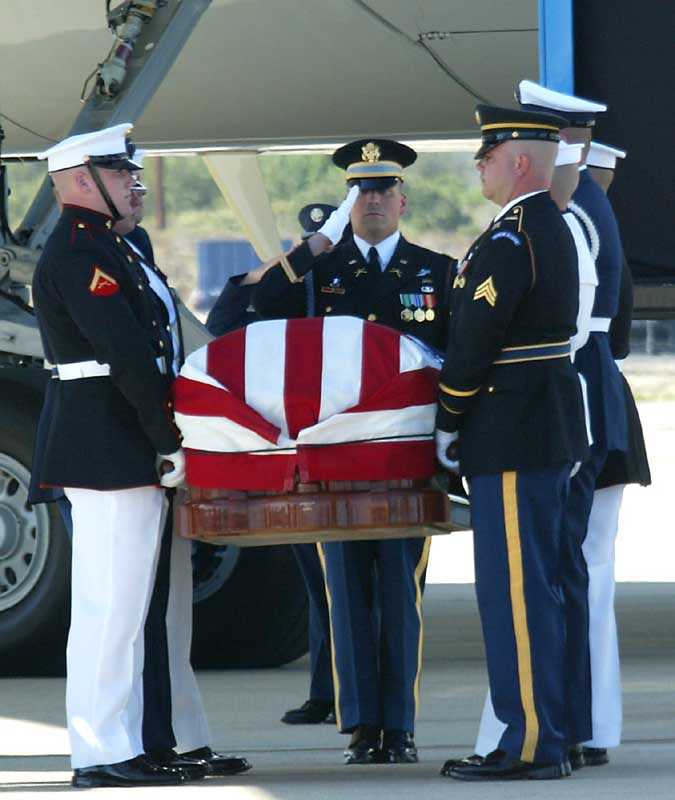
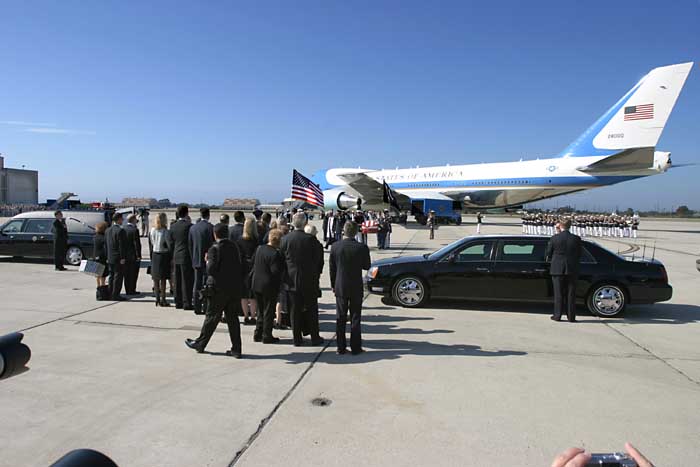
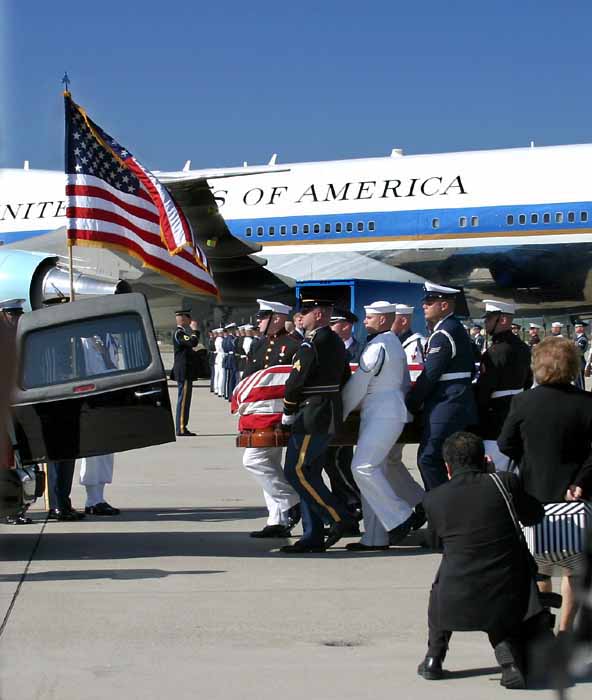
President Reagan is placed into the hearse.
All photos William G. Hartenstein ©2004
The tradition of saluting can be traced to the Middle Ages practice of placing oneself in an unarmed position and, therefore, in the power of those being honored.
The cannon salute might have originated in the 17th century with the maritime practice of demanding that a defeated enemy expend its ammunition and render itself helpless until reloaded — a time-consuming operation in that era.
In the Anglo-Saxon Empire, seven guns was a recognized naval salute, seven being the standard number of weapons on a vessel. Because more gunpowder could be stored on dry land, forts could fire three rounds for every one fired from sea, hence the number 21. With the improvement of naval gunpowder, honors rendered at sea were increased to 21 as well.
Beginning in our colonial period the United States fired one shot for each state in the Union. This was continued until 1841 when it was reduced to 21 from 26. Although it had been in use for more than 30 years, the 21-gun salute was not formally adopted until Aug. 18, 1875. This was at the suggestion of the British, who proposed a "Gun for Gun Return" to their own 21-gun salute.